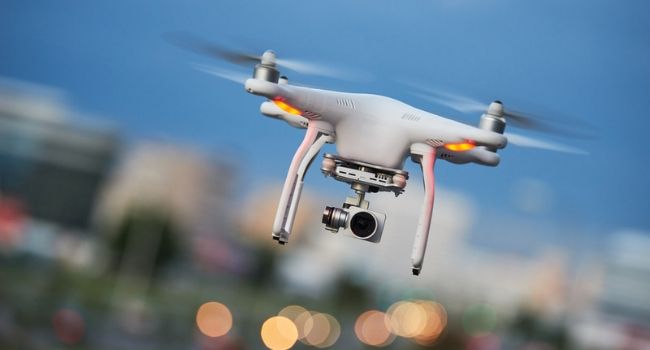
How Police Forces Are Using Drones to Keep Officers Out of The Line of Fire
California law enforcement is praising the use of drones and high-definition video surveillance to track suspects and strategize police responses.
- By Haley Samsel
- Jul 25, 2019
A police force in northern California is using drone technology and high-definition video to help officers navigate dangerous situations, including a standoff with a man suspected of shooting at his family members.
Earlier this month, the police department in Pittsburg, California used a drone to help survey a showdown with 58-year-old Ronald Ball, who barricaded himself in his home after family members said he fired a gun at them during an argument, The East Bay Times reported.
After five hours, Ball exited his house and was peacefully taken into custody. There were no injuries, in part because of the remote-controlled drones, police told the Times.
“We were able to use the drones to determine where the doors and windows were in the backyard to relay that to the SWAT team so they could make decisions about how they were going to do the SWAT operation,” Nicholas Law, who heads his department’s Unmanned Aerial Vehicle program, told the Times.
Law added: “It allows a different perspective on the incident … We were recording everything that was going on from the sky. Body cameras are from one perspective; with this, you can get more of a broad perspective.”
The number of drones in use by police departments across the country is expanding rapidly, prompting some backlash from communities who fear that the drones will be used for surveillance and violate privacy rights.
Oakland adopted an ordinance in May that imposes strong regulations on the city’s use of surveillance devices, including drones. That measure requires approval from the city council and a separate commission to use any surveillance technology on residents, according to Gizmodo.
But, while other cities like Berkeley and Davis have followed in Oakland’s footsteps, the program in Pittsburg has not earned as much public outrage. Law attributes this to the department’s policy that drones are used only in specific incidents rather than for “routine surveillance,” the Times reported.
“We haven’t gotten that pushback because we’ve been transparent,” Law said. “We aren’t trying to watch people. It’s not for covert reasons. It’s to protect people.”
Since the department bought the drone three years ago, Pittsburg police have used drones to help locate missing people, monitor significant fires and track a suspect as he fled from a backyard after stealing a vehicle, Law told the Times. In the future, Law foresees it being used for marine rescues.
At a significantly lower cost than helicopter surveillance and the progress of image quality in drone cameras, Law and other law enforcement officers see drones as a powerful tool to keep officers out of the line of fire and better prepare a police response, according to the Times.
“This technology is becoming more commonplace in law enforcement,” said Tammany Brooks, the chief of the Antioch Police Department, which also uses drones. “They are amazing tools that work as a tremendous force multiplier for us.”
About the Author
Haley Samsel is an Associate Content Editor for the Infrastructure Solutions Group at 1105 Media.